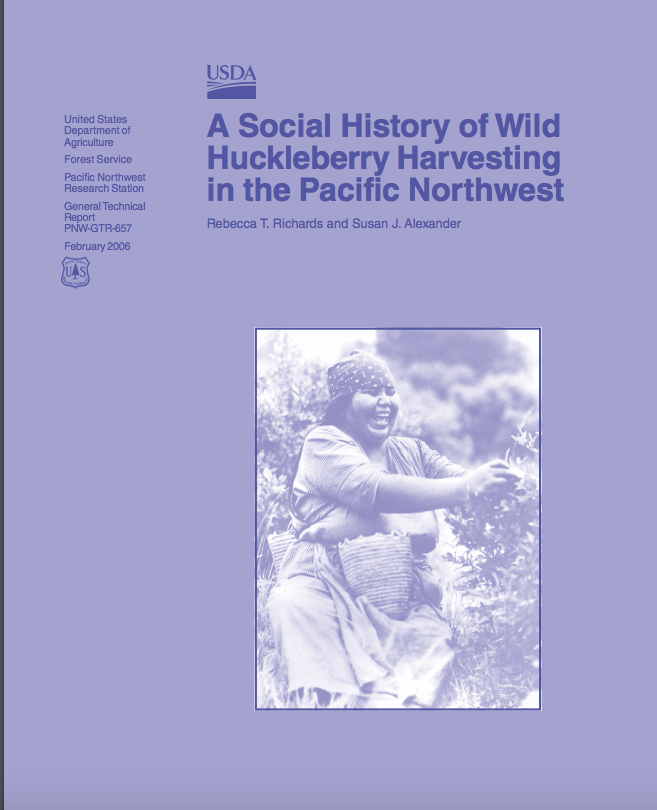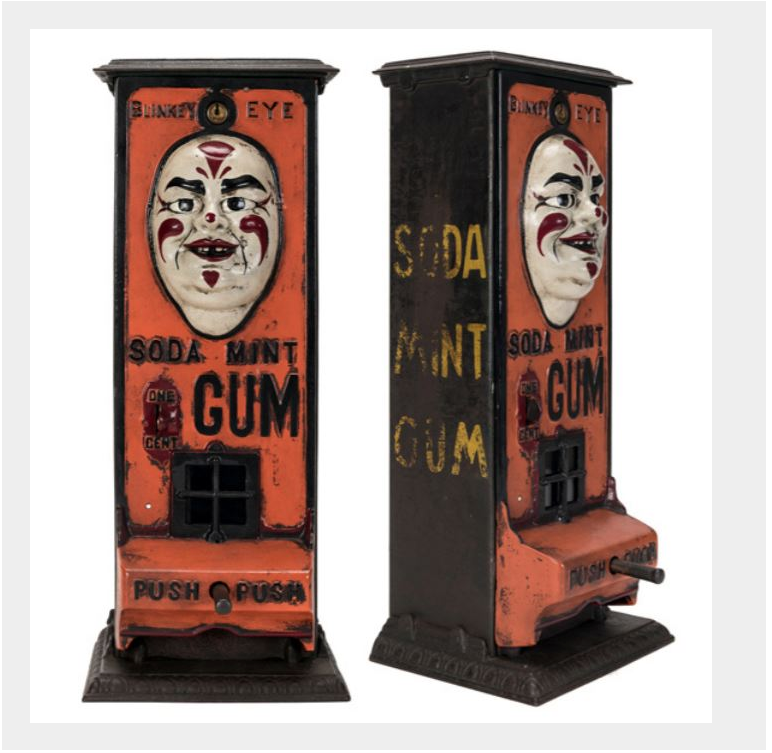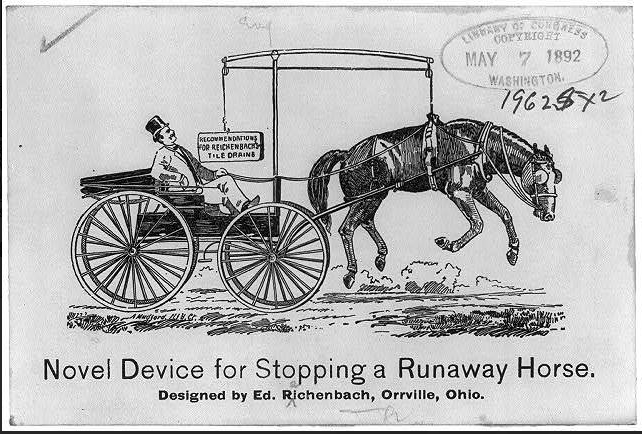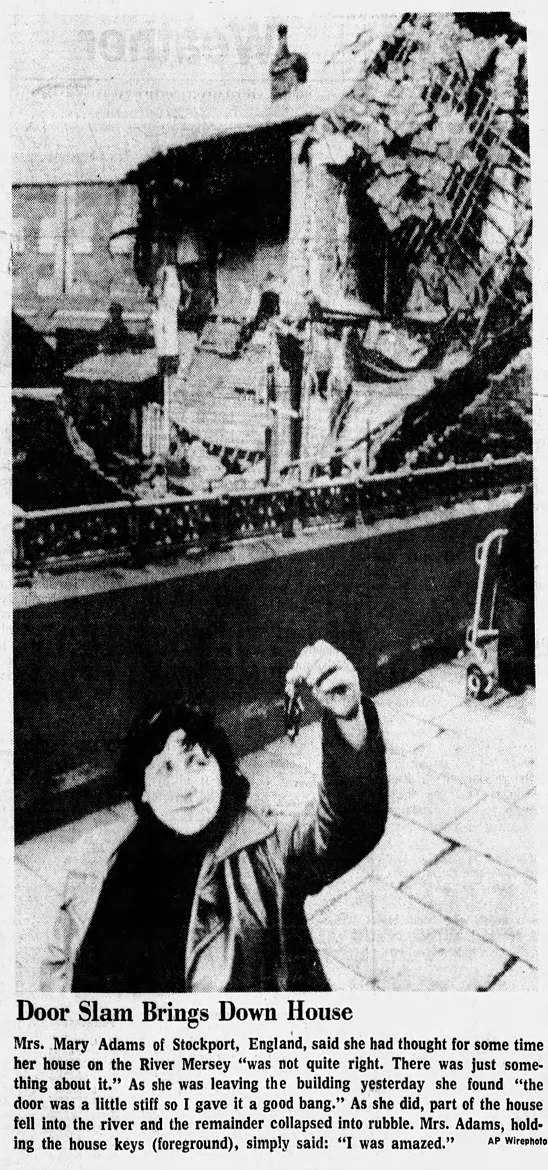June 2020
June 10, 2020
Sugar Doping
1924: Despite being fed sweet hot tea and peppermint creams in an experimental attempt to increase their energy, the Yale soccer team lost to the visiting team by 5 to 1.
Bridgeport Telegram - Nov 11, 1924
Posted By: Alex - Wed Jun 10, 2020 -
Comments (0)
Category: Sports, Experiments, Junk Food, Nutrition, 1920s
A Social History of Wild Huckleberry Harvesting in the Pacific Northwest

Read it here.
Posted By: Paul - Wed Jun 10, 2020 -
Comments (2)
Category: Boredom, Customs, Daredevils, Stuntpeople and Thrillseekers, Food, Government, Regionalism
June 9, 2020
The Glmite Bomb
Before the atomic bomb, other "super bombs" were dreamed up and invented. One of the more notorious was Lester Barlow's Glmite Bomb. Barlow claimed it could kill everything within a 1000-yard radius, but when the U.S. military tested it in 1940, exploding it in a field surrounded by goats, it failed to kill, or even injure, a single goat.Glmite also has to be one of the worst names ever for an explosive. It was created by combining the words 'Glenn' and 'Dynamite'.
More details from The Ordnance Department: Procurement and Supply, by Harry Thomson and Lida Mayo —
Tests of the Barlow bomb took up a good deal of the time of Ordnance planners in April and May, extending down into the most anxious weeks in May. When the newspapers announced that goats would be tethered at varying distances from the bomb to determine its lethal effects, Congress and the War Department were deluged with letters of protest from humane societies and private citizens. All the concern turned out to be wasted. At the first test, the bomb leaked and did not go off; at the second, held at Aberdeen Proving Ground in late May, the explosion occurred, but the goats, unharmed, continued to nibble the Maryland grass.

Barlow supervising the set up of the Glmite Bomb.

The Algone Upper Des Moines - June 18, 1940

Explosion of the Glmite Bomb at Aberdeen Proving Ground
Note the goats in the right foreground, unharmed
Posted By: Alex - Tue Jun 09, 2020 -
Comments (2)
Category: 1940s, Weapons
Jan Švankmajer’s “Dimensions of Dialogue”
Filmmaker's Wikipedia Page.
Posted By: Paul - Tue Jun 09, 2020 -
Comments (3)
Category: Antisocial Activities, Body, Movies, Stop-motion Animation, Surrealism, 1980s, Eating
June 8, 2020
The Animan
It's now 2020. Where are our bipedal TVs?

Source: Popular Science - June 1988
Posted By: Alex - Mon Jun 08, 2020 -
Comments (7)
Category: Inventions, Television, AI, Robots and Other Automatons, 1980s
The Museum of Ridiculously Interesting Things

WU-vies will find a simpatico home at THE MUSEUM OF RIDICULOUSLY INTERESTING THINGS.
Here's a typical item.
THE BLINKEY EYE GUM DISPENSER.

Posted By: Paul - Mon Jun 08, 2020 -
Comments (5)
Category: Weird Studies and Guides
June 7, 2020
Hand Sanitizer Holster
Paula Russo was recently granted patent #10653232 for a "hand sanitizer holster," which seems like a timely invention for the age of covid, although she must have begun the patent process long before covid-19 was known.
Posted By: Alex - Sun Jun 07, 2020 -
Comments (6)
Category: Hygiene, Baths, Showers and Other Cleansing Methods, Inventions, Patents
Novel Device for Stopping a Runaway Horse

If you read the words on the "counterweight," they say, "Recommendations for Reichenbach's Tile Drains." So this is a humorous advertisement rather than an actual patent. But I would not be surprised if someone somewhere had come up with such an idea.
Source.
Posted By: Paul - Sun Jun 07, 2020 -
Comments (2)
Category: Animals, Business, Advertising, Humor, Nineteenth Century
June 6, 2020
Slammed door, house fell down
The strange case of Mary Adams of Stockport, England, who slammed shut her front door, causing the house to collapse into rubble.
Fort Lauderdale News - Jan 22, 1975
I was curious what the scene of the house collapse looked like today. After some searching on Google maps, I'm pretty sure her house was situated by the Park Bridge in Stockport (which is part of Greater Manchester). Though I'm not sure what side of the bridge it was on.
Posted By: Alex - Sat Jun 06, 2020 -
Comments (2)
Category: Architecture, 1970s
Workout with She Hulk
I don't know about you, but I'm inspired!
Posted By: Paul - Sat Jun 06, 2020 -
Comments (5)
Category: Comics, Bodybuilding
| Get WU Posts by Email | |
|---|---|

| Who We Are |
|---|
| Alex Boese Alex is the creator and curator of the Museum of Hoaxes. He's also the author of various weird, non-fiction books such as Elephants on Acid. Paul Di Filippo Paul has been paid to put weird ideas into fictional form for over thirty years, in his career as a noted science fiction writer. He has recently begun blogging on many curious topics with three fellow writers at The Inferior 4+1. Chuck Shepherd Chuck is the purveyor of News of the Weird, the syndicated column which for decades has set the gold-standard for reporting on oddities and the bizarre. Our banner was drawn by the legendary underground cartoonist Rick Altergott. Contact Us |

